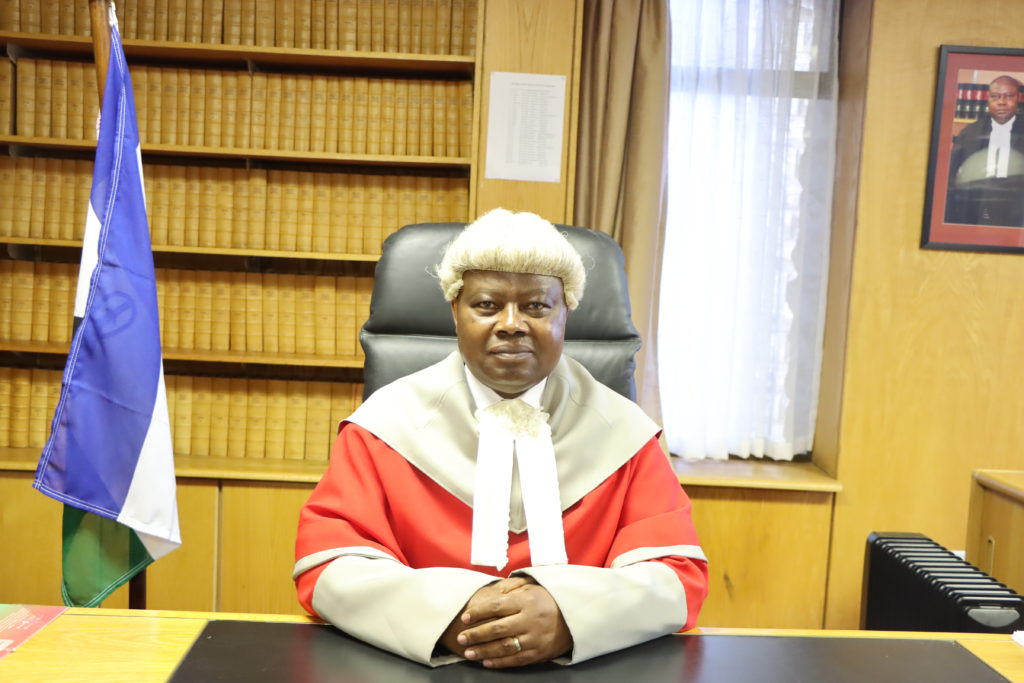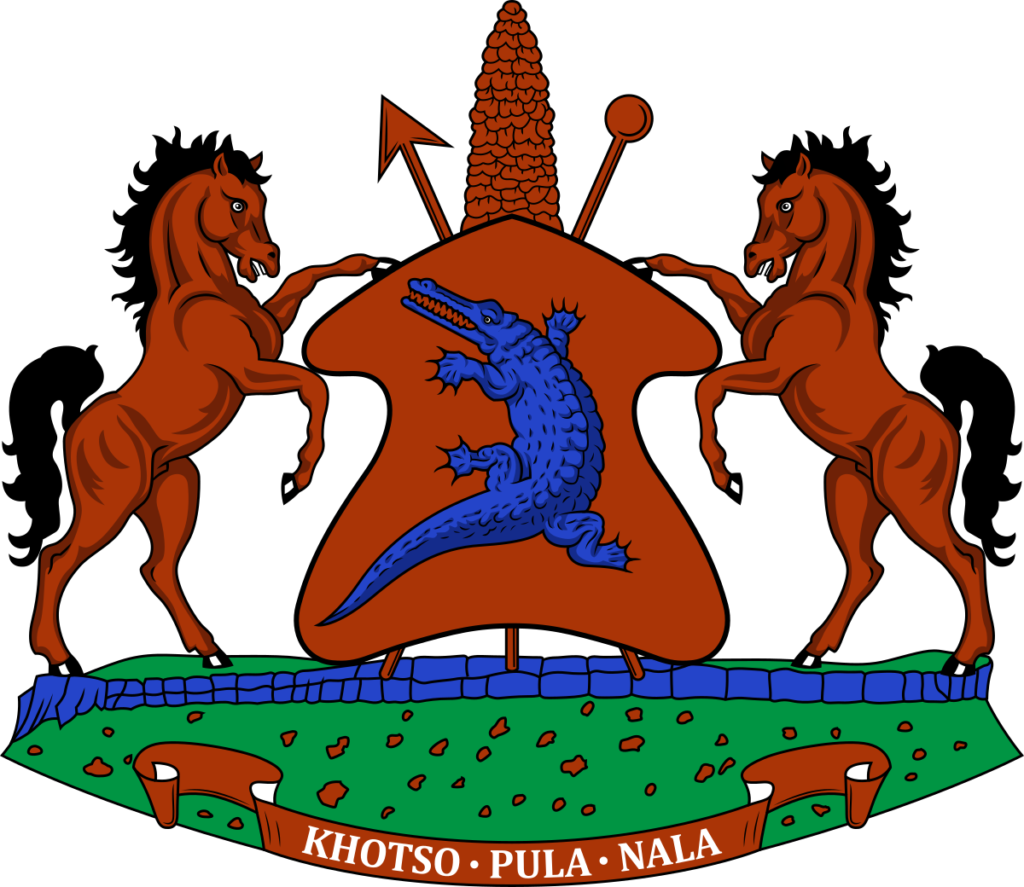About The Judiciary
Historic Background
The Judicial system of Lesotho is can be traced as far back as the late 1800s when Lesotho was colonised. The centralization of the High Court in Maseru is a colonial legacy bequeathed by annexation of Lesotho to Britain in 1868 per Proclamation No.14 of 1868. This Annexation Proclamation was published on 12 March 1868 and reads as follows: “From and after the publication hereof, the said Tribe of the Basutos shall be, and shall be taken to be, for all interests and purposes, British subjects; and the Territory of the Tribe shall be, and shall be taken to be, British Territory.”

From then on, a dual legal system was created per Proclamation 2B of 1884. By this dualism, two streams of justice were birthed. The first stream operates the received Roman Dutch common law. The second preserves the traditional customary law system. A court architecture was put in place to operationalise the two streams. The High Court operationalised the Roman-Dutch common law for the benefit of colonial settlers and those Basotho who were judged to have abandoned their customary way of life by adopting a European mode of living and married under European law. (See the Administration of Estates Proclamation 19 of 1935). The so-called Basotho Courts (i.e. Central and Local Courts) operated the customary law. At the inception of annexation, the High Court was headed by the Resident Commissioner and called a Resident Commissioner’s Court while the Basotho courts’ structure was administered by chiefs.
In 1938, two changes were made to the court structure. Firstly, the Resident Commissioner’s Court was abolished and reconstituted as the High Court. A single judge of the High Court was shared with the High Courts of Bechuanaland and Swaziland. Secondly, the magistrates’ courts were created to deal with cases deemed less important to be handled by the High Court. In 1954, Proclamation No.18 of 1954 was promulgated to streamline the judicial structure by introducing the appointment of the Registrar and Assistant Registrars as the High Court’s administrative staff. In 1967, shortly after Lesotho attained independence, Parliament re-established the High Court in terms of the High Court Act No.4 of 1967. Twelve years later in 1978, it was re-established in terms of the High Court Act No.5 of 1978. The Court of Appeal was created in terms of the Court of Appeal Act No. 10 of 1978 and Subordinate Courts as per the Subordinate Courts Order No. 9 of 1988.
Previous and current Chief Justices and Presidents of the Court of Appeal
Chief justices
1. The Hon. Chief Justice Sir Walter Huggard (1937 – 1948)
2. The Hon. Chief Justice Sir Walter Harragin (1950 – 1952)
3. The Hon. Chief Justice Harold Curwen Willan (1952-1956)
4. The Hon. Chief Justice Cox (1959 – 1961)
5. The Hon. Chief Justice Elyan (1961-1962)
6. The Hon. Chief Justice Watkin Williams (1962-1965)
7. The Hon. Chief Justice Benson (1965 -1966)
8. The Hon. Chief Justice Johnston (1966- 1968)
9. The Hon. Chief Justice H.R. Jacobs (1968 – 1973)
10. The Hon. Chief Justice Joas Tseliso Mapetla (1974- 1975)
11. The Hon. Chief Justice Taufik Suliman Cotran (1976-1986)
12. The Hon. Chief Justice Peter Brendan Cullinan (1986 – 1993)
13. The Hon. Chief Justice Joseph Lebona Kheola (1994 – 2002)
14. The Hon. Chief Justice Mahapela Lebohang Lehohla (2002 – 2013)
15. The Hon. Chief Justice Nthomeng Justina Majara (2014 -2018)
16. The Hon. Chief Justice Sakoane Peter Sakoane (2020 – present)
Presidents of the court of appeal
1. The Hon. Mr. Justice Roper (n/a)
2. The Hon. Mr. Justice Oglive-Thompson (n/a)
3. The Hon. Mr. Justice Oliver D. Schreiner (1971-1974)
4. The Hon. Mr. Justice I.A. Maisels (1974 – 1979)
5. The Hon. Mr. Justice Peter W. Schuiz (1974 -1991)
6. The Hon. Mr. Justice Ismail Mohamed (1991 – 1996)
7. The Hon. Mr. Justice Jan H. Steyn (1996 -2008)
8. The Hon. Mr. Justice Micheal Mathealiara Ramolibeli (2008 – 2014)
9. The Hon. Dr. Justice Kananelo Mosito (2015 – present)

Sakoane Peter Sakoane
Honourable Chief Justice
The Office Of The Chief Justice
Functions Of The Chief Justice
The Chief Justice is the Head of the Judiciary and a link with other arms of Government. The Chief Justice administers adjudicative and administrative functions. He also provides general direction and leadership over the Judiciary. He gives an annual report to the nation on the state of the Judiciary and on the administration of justice at the opening of the judicial calendar year.
Hon. Chief Justice Sakoane Peter Sakoane
The Hon Chief Justice Sakoane Peter Sakoane was appointed Chief Justice on November 2020. Prior to his appointment, he acted as a puisne judge from 2014 and was confirmed in 2016. Before then he served as Crown Counsel and Counsel to the Law Reform Commission from 1988 to 2010. Thereafter, he went into private practice and was bestowed with the honour of Kings Counsel in 2013.
He holds the following professional qualifications:
- Master of Laws (Sussex)
- Bachelor of Laws (National University of Lesotho)
- Bachelor of Arts (National University of Lesotho)
- Admitted as Practitioner in 1987
- Appointed Kings Counsel in 2013
Administration
Section 118, of the Lesotho Constitution of 1993, determines that the judicial powers shall be vested in the courts of Lesotho (comprising of the Court of Appeal, High Court and Subordinates Courts). Section 118 also underscores the independence of the Lesotho Judiciary. Section 118 further sets the duty of other organs of the state to protect the courts, judges, magistrates and officials. The Administration of the Judiciary Act, 2011 (Act No. 16 of 2011) introduced significant changes to the Judiciary and its governance.
Judicial Administration Act 2011 (Act No. 16 of 2011) accords administrative and financial autonomy to the Judiciary. The operationalization of the Act reinforces the doctrine of separation of powers and independence of our Judiciary. The Office of the Registrar of the High Court is an administrative office and supports the courts to fulfil their constitutional mandate in upholding the rule of law and in delivering justice impartially, speedily, effectively and efficiently. The administrative office led by the Registrar supports the courts under the direction and control of the Chief Justice.
The day-to-day administrative and financial running of the affairs of the Judiciary is performed by the Registrar, who is assisted by Deputy registrars, Assistant Registrars and other staff members designated from the public service for such purpose. Esteemed surfer, you can visit the site of all our courts and the judicial administration of the Office of the Judiciary in the main menu. Information on the courts, their structure, jurisdiction and judicial officers are available on their respective sites.
High Level Statements
Corporate Direction
Vision: A proactive and trustworthy Judiciary that delivers accessible and swift quality services responsive to public needs.
Mission: To administer and deliver justice to all in accordance with the constitution and the laws of Lesotho.
Registrar Of The High Court
Mrs. 'Mathato Sekoai
The administration of the Judiciary is governed by the Administration of the Judiciary Act of 2011. (Act No. 16 of 2011). The Act establishes three important judicial components/aspects namely:
- Autonomous and accountable administration of the Judiciary
- The Judiciary service
- A budget of the Courts/Judiciary.
The Act makes the Registrar the Chief Administrator of the Judiciary assisted by the Deputy Registrar and the Judicial Administrator. In relation to the funds and expenditure of the judiciary, the Registrar is the Chief Accounting Officer. In carrying out functions of the office, the Registrar is not subject to the direction or control of any person, institution or authority except the President of the Court of Appeal in matters concerning the Court of Appeal and the Chief Justice in matters concerning the High Court and other courts.






